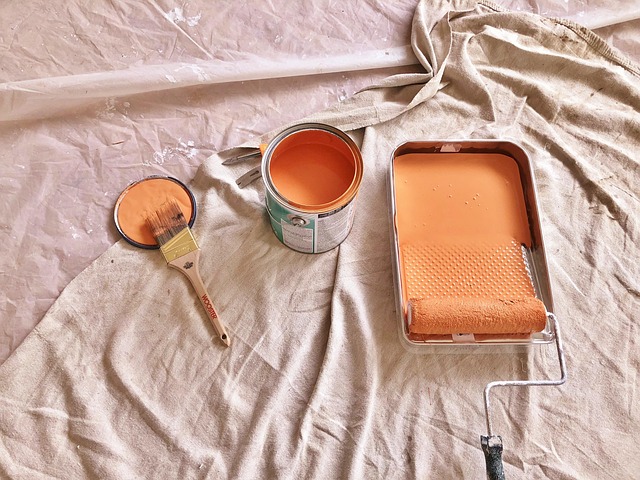Why Renovation Still Pays Off
When done thoughtfully, home renovations continue to offer strong returns on investment (ROI), both in increased resale value and overall home appeal. As markets shift and buyer expectations evolve, knowing when—and what—to renovate can make a major financial difference.
The Value of Smart Improvements
Not all upgrades are created equal. Some renovations offer an impressive ROI, while others may drain your budget without significantly increasing your home’s value.
Here’s what typically adds value:
- Updated kitchens and bathrooms: These remain top priorities for buyers.
- Energy-efficient upgrades: Save money now, attract interest later.
- Improved curb appeal: Enhances both first impressions and resale potential.
Avoid these common pitfalls:
- Overly personalized styles that may not appeal to most buyers.
- Costly, niche additions (like hobby-specific rooms) that don’t add universal value.
- Skipping permits or inspections, which can delay or derail a future sale.
Timing Matters
Knowing when to renovate is just as important as knowing what to renovate. Consider holding off if:
- The real estate market in your area is cooling.
- You’re unsure about your long-term plans for the property.
- You’re renovating impulsively without a clear goal or budget.
On the other hand, it’s often smart to renovate when:
- You’re preparing to list in a competitive seller’s market.
- Key features of your home (like a dated kitchen or old roof) are noticeably aging.
- You’ve consulted local comps and found that select updates could push your home’s value higher without over-improving for the neighborhood.
Renovation is still a reliable route to building equity—but only if it’s approached with strategy, not spontaneity.
High-Impact, High-Return Upgrades
If you’re looking to increase your home’s value, start with the spaces buyers care about most. Strategic updates to kitchens, bathrooms, and your home’s exterior can deliver some of the highest returns on investment.
Kitchen Refreshes
The kitchen remains a top priority for buyers—and you don’t need a gut renovation to make a big difference. Focus on upgrades that modernize the space while keeping it functional.
- Cabinet Refacing: Instead of full replacements, updating cabinet doors and hardware can modernize the look on a budget.
- Appliance Upgrades: Stainless steel or energy-efficient models hold strong appeal.
- Layout Tweaks: Improving flow or adding counter space can dramatically increase usability.
Why it works: A fresh kitchen feels turnkey without the sticker shock of a full remodel. Clean lines, ample storage, and neutral finishes tend to attract the broadest buyer pool.
Bathroom Remodels
Small improvements in the bathroom can create a surprisingly big impact. Whether it’s a hall bath or the guest powder room, buyers appreciate a clean, contemporary feel.
- Updated Fixtures: Swapping out a dated vanity or faucet can immediately lift the space.
- Lighting Enhancements: Vanity lights, dimmers, and well-placed sconces improve both ambiance and function.
- Tile Changes: Retiling a floor or shower adds visual freshness that feels high-end.
Takeaway: Bathrooms don’t need to be enlarged to feel luxurious. Clean design and thoughtful updates make even compact spaces stand out.
Curb Appeal Improvements
Your home’s exterior gives buyers their first impression—and a strong one can set the tone for a quicker, higher-dollar sale.
- Landscaping: Trimmed bushes, fresh mulch, and seasonal flowers add instant charm.
- Exterior Paint: A fresh coat (especially on the front door or trim) signals good upkeep.
- Entryway Enhancements: New house numbers, modern lighting, or a welcoming porch setup create an emotional pull.
Why it matters: Many buyers decide how they feel about a home before they walk in the front door. Curb appeal affects perceived value and sets expectations for the interior.
In these high-traffic areas, small updates can lead to big returns. Focus on quality improvements that offer both style and function—without over-personalizing for resale.
Energy Efficiency Boosts
Energy-efficient upgrades are one of the most practical ways to increase a home’s value—and they’re not just for eco-conscious buyers anymore. Smart thermostats like Nest or Ecobee bring daily utility, adjusting temperatures automatically and trimming energy costs. They’re small devices with a sizable impact on buyer perception.
Then there’s insulation. Upgrading it—especially in attics and crawlspaces—reduces heating and cooling strain, which translates into lower utility bills. It’s not flashy, but when savvy buyers spot consistent R-values on inspection reports, it matters.
Window replacements are another powerful move. Double- or triple-pane models with low-E coatings improve comfort while cutting leaks and outside noise. Modern windows also give a sleek, updated look with functional value baked in.
Tying these upgrades together is the growing demand for homes with green certifications—ENERGY STAR, LEED, or even localized tags. These aren’t just badges; they signal a home that’s been thoughtfully maintained and built for long-term efficiency. In markets where energy awareness is climbing, that stamp can seal a deal.
Finishing Unused Spaces
Turning unused areas into functional living spaces is one of the smartest ways to increase your home’s value without expanding its footprint. Whether you’re looking to create an extra bedroom, a home office, or a recreational area, strategic upgrades to basements, attics, and garages can yield high returns when it’s time to sell.
Popular Spaces to Renovate
- Basements: Ideal for extra living rooms, bedrooms, home gyms, or rental suites. Modern finishes and proper lighting go a long way in making these spaces feel livable and valuable.
- Attics: Often underutilized, attics can become cozy bedrooms, reading nooks, or quiet office spaces. Ensure proper insulation and ventilation.
- Garages: Think beyond storage—consider converting part or all of the garage into a home studio, workshop, or multi-use space.
Benefits of Converting Existing Square Footage
- Maximizes your home’s current footprint without a costly expansion
- Adds functional space tailored to modern buyer preferences
- Lower cost per square foot compared to building a new addition
Permits and Code Reminders
Before beginning any conversion project, it’s essential to check local zoning laws and building codes:
- Building Permits: Most conversions require permits, especially if you’re adding electrical, plumbing, or changing structural elements.
- Code Compliance: Finished spaces must meet safety codes for ceiling height, egress (like windows or exits), and ventilation.
- Utility Considerations: HVAC, plumbing, and electrical systems may need to be extended or upgraded.
Pro Tip: Always consult with a contractor or local permitting office before you begin. A properly permitted renovation not only avoids legal issues—it also reassures future buyers your upgrades are safe and compliant.
Budget-Savvy Upgrades That Still Add Value
Not every renovation needs to be a full-gut overhaul. In fact, some of the most effective upgrades are subtle, inexpensive, and easy to execute in a weekend.
First, update your lighting. Poor lighting makes even the cleanest space feel dated. Swapping in layered lighting—a mix of overhead, task, and accent—can shift the mood and make rooms feel larger and warmer. If you’ve still got builder-grade fixtures, it’s time. Go for clean lines, dimmable options, or simple modern pendants and sconces.
Next, consider your color palette. Neutrals are endlessly versatile and universally appealing. Off-whites, soft grays, and beige tones create a blank canvas that helps buyers picture themselves in the space. Don’t overdo it with bold accent walls unless you’re confident it compliments your home’s architecture and style.
Lastly, freshen up hardware. Swapping cabinet pulls, door handles, and faucets with modern options is surprisingly impactful—no sledgehammer needed. Round it out with minor cosmetic tweaks: patch blemishes, repaint trim, and replace old outlet covers.
These changes won’t break your budget, but they will raise your home’s perceived value. Clean, simple, and updated wins.
Mistakes to Avoid
Some renovations add long-term value. Others just add noise. It’s easy to slip into the trap of over-personalization—especially when turning a house into a home. But custom mosaics in the kitchen or themed kids’ bedrooms might make future buyers hesitate. Trends fade. Taste changes. What feels like a creative win now can quickly become a resale red flag.
Overspending is just as dangerous, especially if your neighborhood has a price ceiling. Dropping $80,000 into a bathroom remodel in a zip code where homes cap around $300K? You’re burning money. Upgrades need to match the market. Smart buyers and real estate agents will spot when a reno didn’t respect its financial limits.
Then there’s the DIY trap. Some fixes are weekend-project safe—paint, cabinet pulls, basic lighting. But when amateur tilework or uneven flooring makes a house feel patchy, it lowers perceived value instantly. Buyers don’t want to inherit your learning curve. If a job looks or feels off, they’ll assume bigger issues hide beneath.
Function beats flair. And quality—not complexity—makes buyers feel confident.
Final Thought: Renovate With Purpose
If you’re tackling home renovations to boost value, don’t fall for flashy trends. That barn door or patterned tile might look great today—but style fads fade fast. Focus on lasting functionality: smart storage, efficient layouts, and timeless materials that serve real-world needs.
Before dropping cash on any big upgrade, check comparable homes in your neighborhood. A $50,000 kitchen in a modest housing market doesn’t guarantee the return you’re hoping for. Spend smart and align your improvements with what’s proven to sell well nearby.
Every project should begin with a plan, a realistic budget, and a clear goal. Ask yourself: will this still appeal to buyers five years from now? Renovating with resale in mind doesn’t mean stripping personality—it means making choices that balance comfort today with value tomorrow.
For more home improvement tips and renovation insights, visit HouseZoneSpot.com


 Billake Bartow is a passionate tech writer at HouseZoneSpot, known for his deep understanding of smart home innovations and digital living. His articles focus on practical technology that enhances everyday comfort, convenience, and energy efficiency in modern homes.
Billake Bartow is a passionate tech writer at HouseZoneSpot, known for his deep understanding of smart home innovations and digital living. His articles focus on practical technology that enhances everyday comfort, convenience, and energy efficiency in modern homes.

